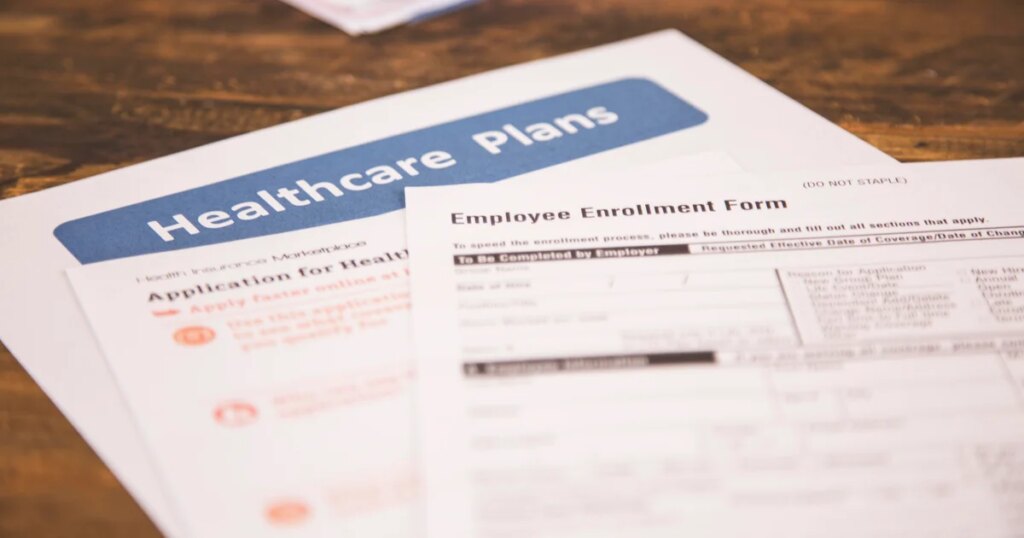The open enrollment period for employer-sponsored health insurance in the United States is set to bring significant financial implications for workers in 2026. A recent analysis from consultant Mercer indicates that employees can expect to see health insurance costs rise by 6% to 7%, which is notably higher than the current inflation rate. This increase could result in average annual contributions of approximately $2,400 for individual coverage and about $8,900 for family coverage, a burden compounded by rising living costs in a challenging economic climate.
| Article Subheadings |
|---|
| 1) Overview of Health Insurance Costs |
| 2) Factors Behind Rising Expenses |
| 3) Impact on Families |
| 4) Long-term Trends in Healthcare |
| 5) Looking Ahead: Future Projections |
Overview of Health Insurance Costs
As employees prepare for the open enrollment season, anticipated increases in premiums are stirring concern. According to Mercer’s analysis, employees may incur an average premium of approximately $2,400 for individual coverage in a preferred provider organization (PPO) plan. Mercer emphasizes that this increase comes at a time when inflation continues to rise, complicating financial situations for many households. For family coverage, deductions from paychecks could climb to about $8,900. This trend highlights the ongoing escalation in healthcare costs expected to burden workers in the upcoming year.
Factors Behind Rising Expenses
Several factors are contributing to the rising costs of health insurance. Chief among them is the increasing age of the workforce, leading to greater medical service utilization. Additionally, the demand for more expensive treatments, notably the growing popularity of GLP-1 medications used for weight loss, has further inflated healthcare costs. As Mercer’s Chief Actuary, Sunit Patel, pointed out, the complexity of the healthcare system in the U.S. and the ongoing demand for services are significant contributors to this situation. The report also underscores the pressure from escalating provider wages and prices of medical goods as critical elements that complicate the landscape of health care financing.
Impact on Families
The implications of these rising costs are particularly concerning for American families, who are already dealing with increased expenses across various sectors of life, including groceries and housing. Reports show that approximately 40% of insured adults under 65 fear the affordability of their health insurance premiums. Lindsay Owens, the executive director of the Groundwork Collaborative, articulated the tough decisions many families face, such as forgoing vacations or other essential expenditures just to manage healthcare expenses. As health insurance costs soar, families may face tough choices to ensure they remain insured.
Long-term Trends in Healthcare
The issue of rising healthcare costs is further complicated by a series of long-term trends affecting the industry. Increased consolidation among health insurers has led to reduced competition in the marketplace, allowing for higher prices. Additionally, empirical data from the Peter G. Peterson Foundation confirms that while Americans pay significantly more for healthcare compared to individuals in other developed countries, the outcomes remain subpar. This disparity raises questions about the efficiency of the U.S. healthcare system and its ability to provide affordable care.
Looking Ahead: Future Projections
Projections for health care costs suggest that these trends may continue into 2026 and beyond. Mercer’s analysis indicates that while workers will bear increased costs in the short term, structural issues within the healthcare system create a scenario where costs may remain elevated for the foreseeable future. The complexity of the health care landscape, compounded by external economic pressures, means that families might need to brace for consistent healthcare expenses. As the Consumer Price Index shows signs of slight increases, highlighting inflationary trends, the outlook remains uncertain.
| No. | Key Points |
|---|---|
| 1 | 2026 health insurance costs expected to rise by 6-7% |
| 2 | Average employee payment for individual coverage could reach $2,400 |
| 3 | Family coverage premiums might increase to approximately $8,900 |
| 4 | Factors contributing to rising costs include an aging workforce and treatment demand |
| 5 | Americans are increasingly concerned about affording health coverage amidst rising living costs |
Summary
The results of the recent analysis highlight the significant challenges that American workers face regarding health insurance costs in 2026. As these expenses increase amid rising overall inflation rates, families must navigate tough financial decisions. The confluence of factors leading to these elevated premiums raises important questions about the sustainability of the U.S. healthcare system and the financial well-being of countless families across the nation.
Frequently Asked Questions
Question: What are the expected increases in health insurance premiums for 2026?
Employees are likely to see increases of 6% to 7% in health insurance premiums, translating to about $2,400 for individual coverage and around $8,900 for family coverage.
Question: What are some causes of the rise in health insurance costs?
The increase in healthcare costs is attributed to factors such as an aging workforce utilizing more medical services, the rising demand for expensive treatments, and growing complexities in the U.S. healthcare system.
Question: How is this impacting American families?
Many American families are feeling the financial strain, with surveys indicating that about 40% of insured adults under 65 express concern over the affordability of their monthly health insurance premiums. This pressure may force families to cut back on other expenses.


